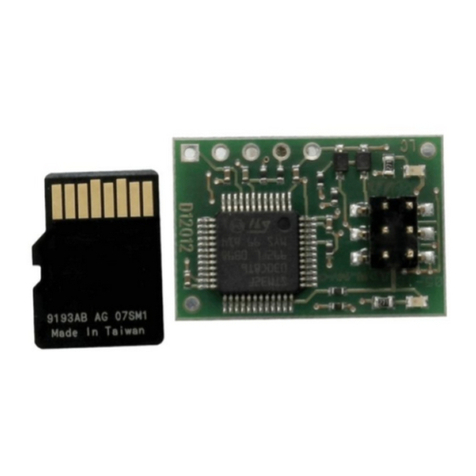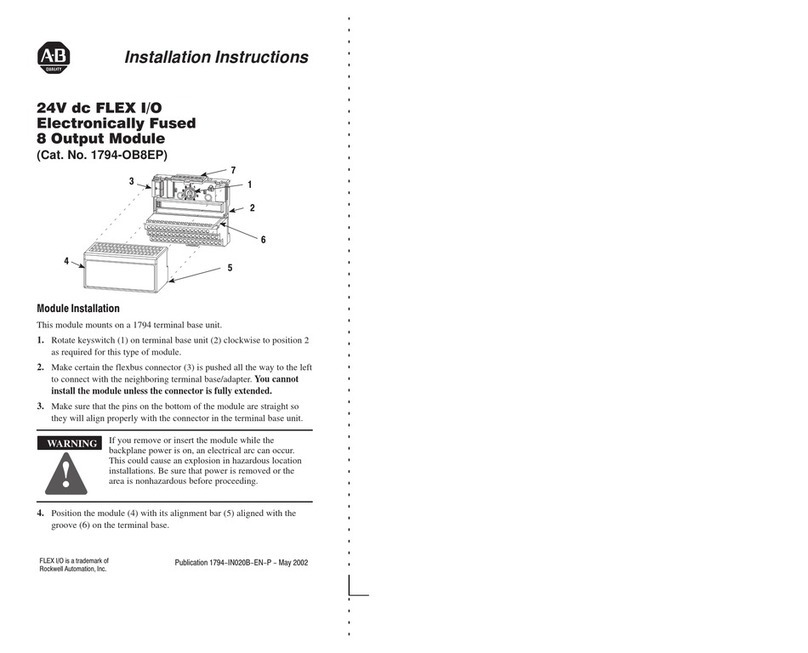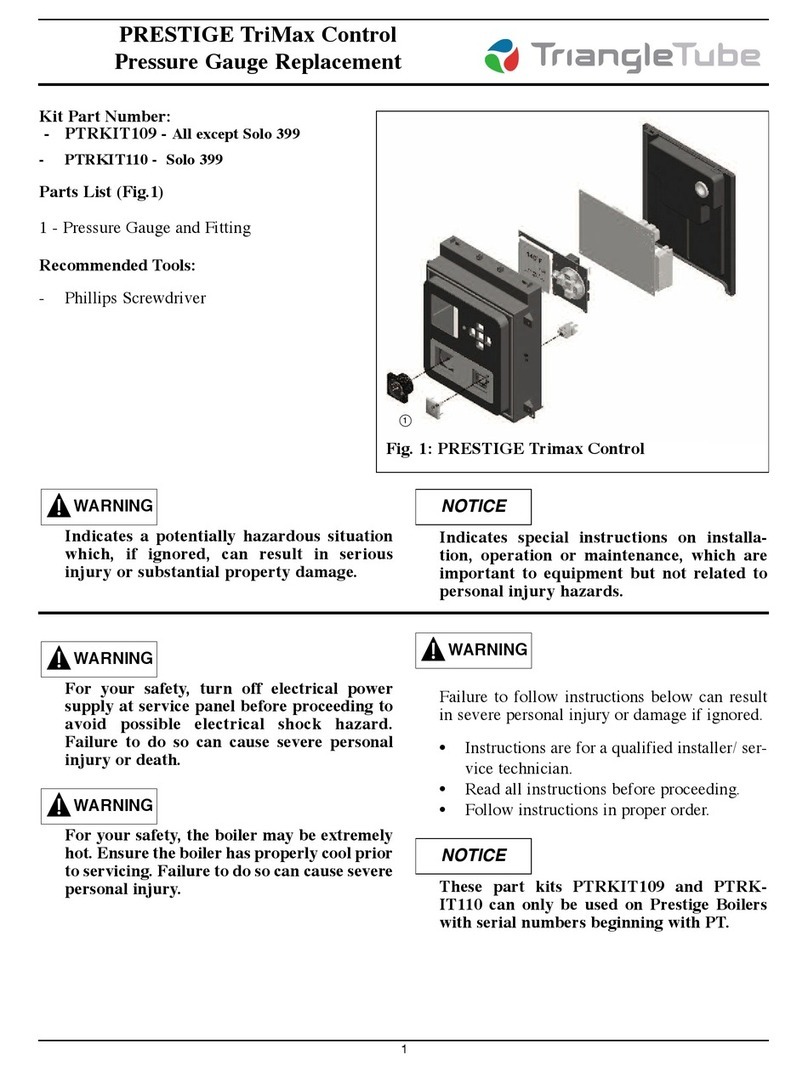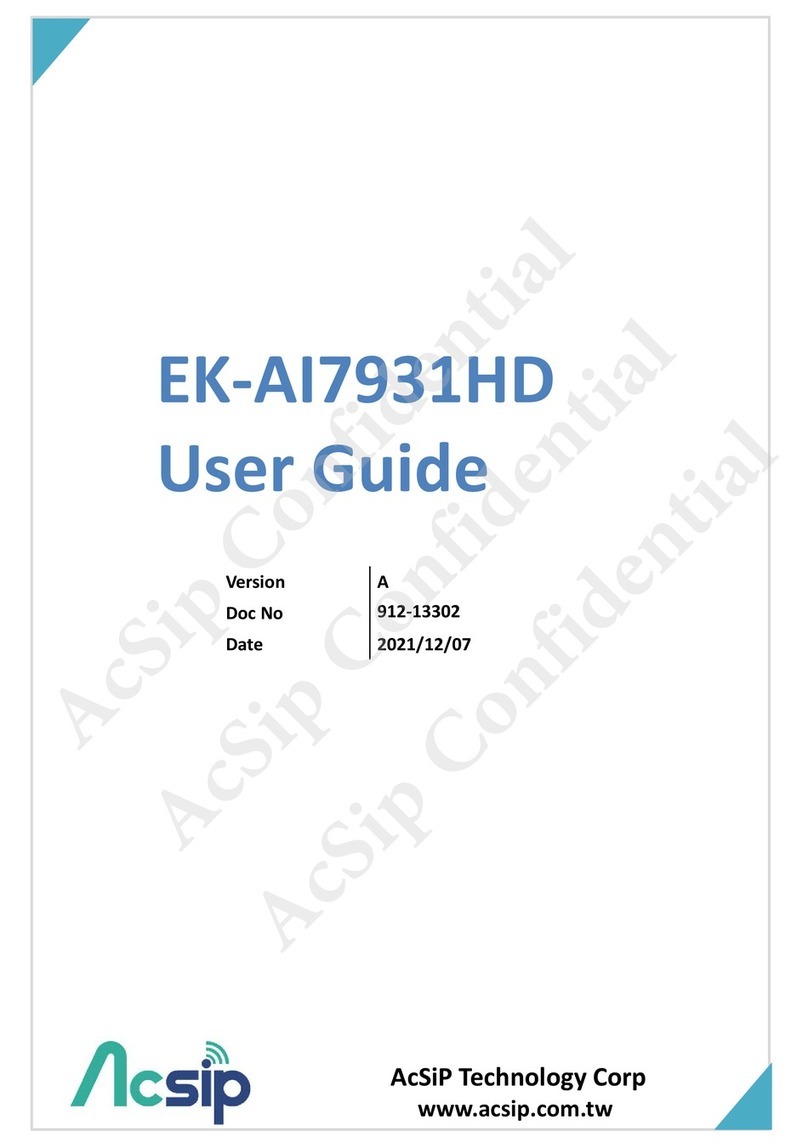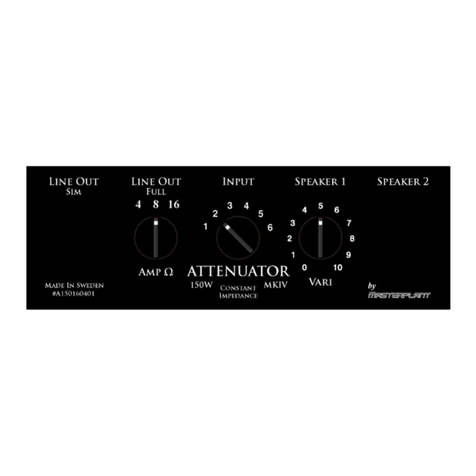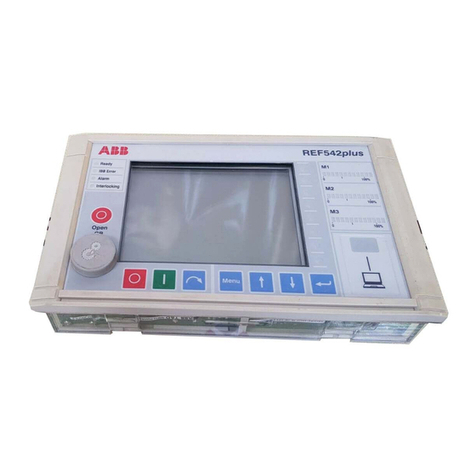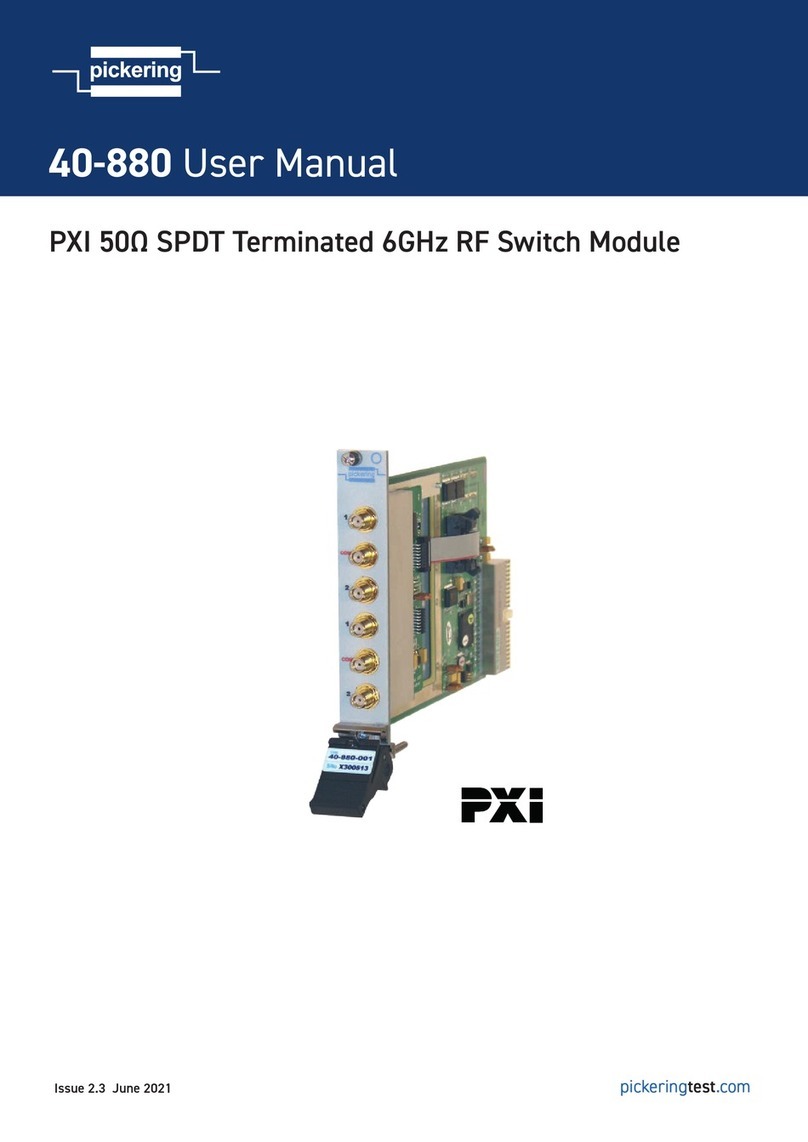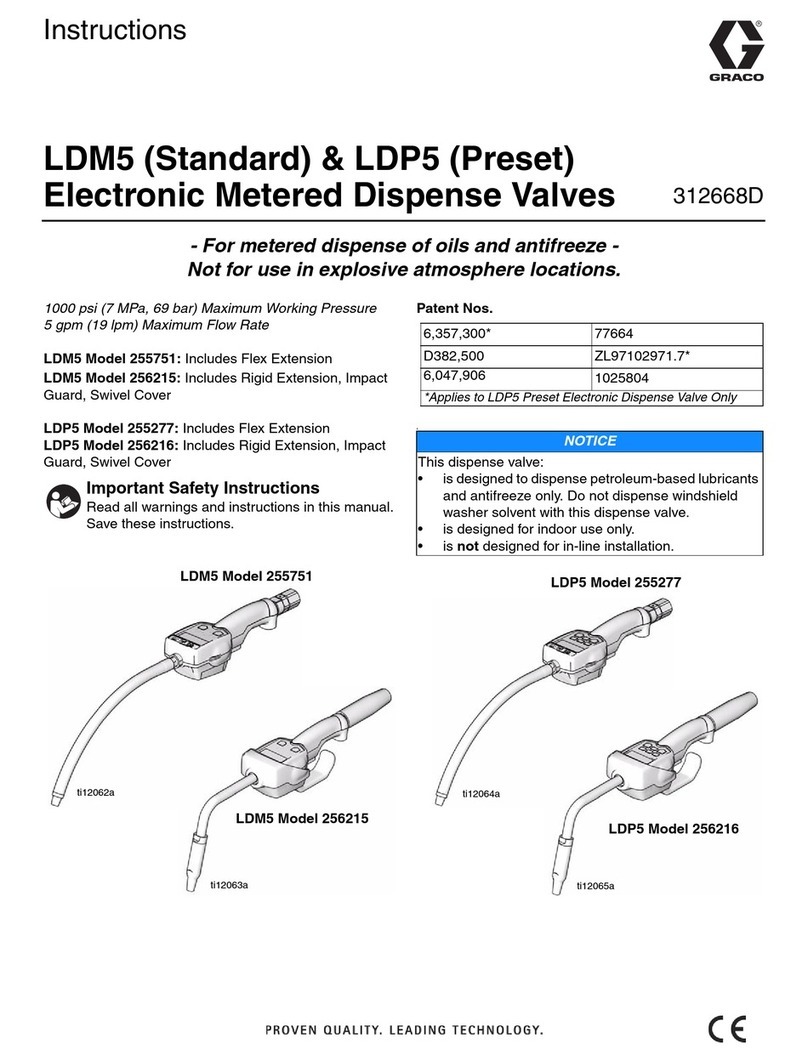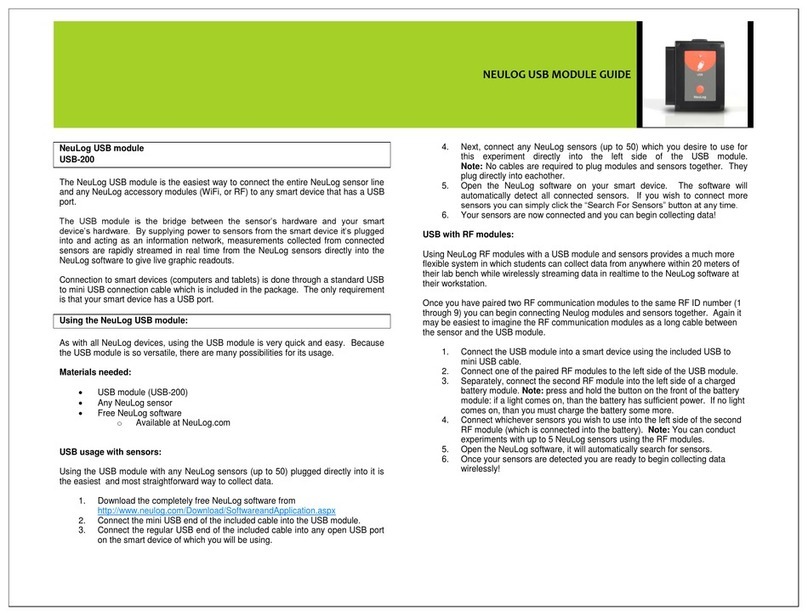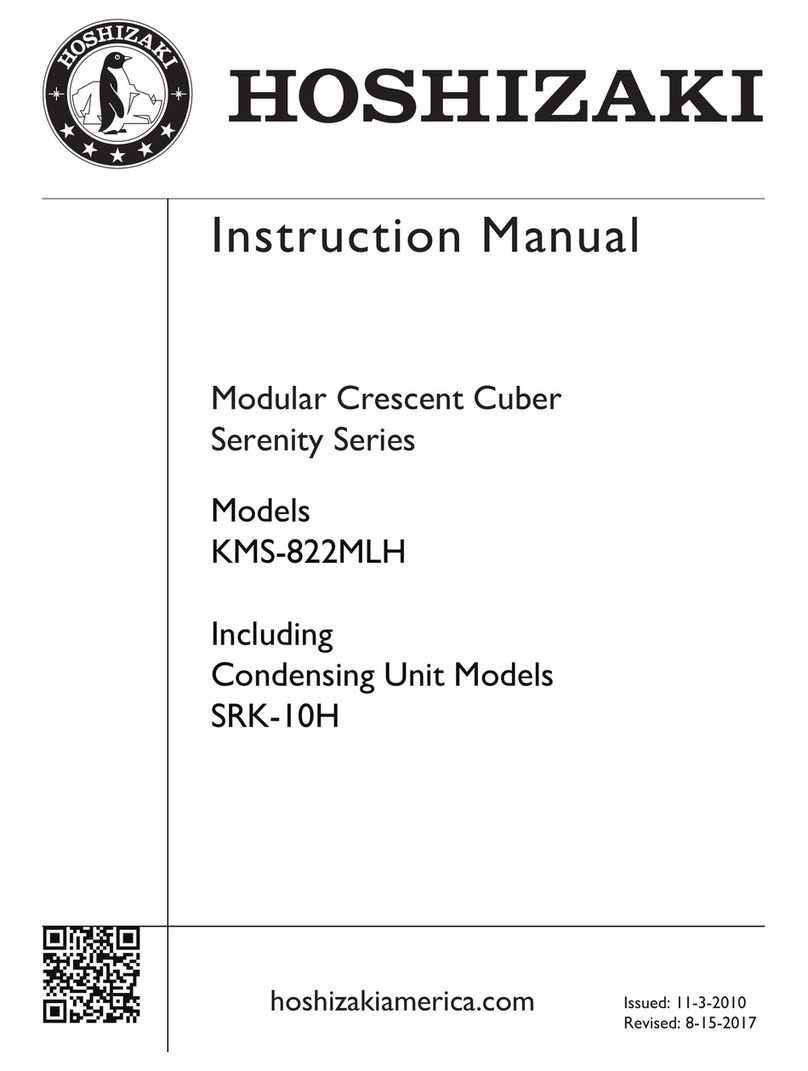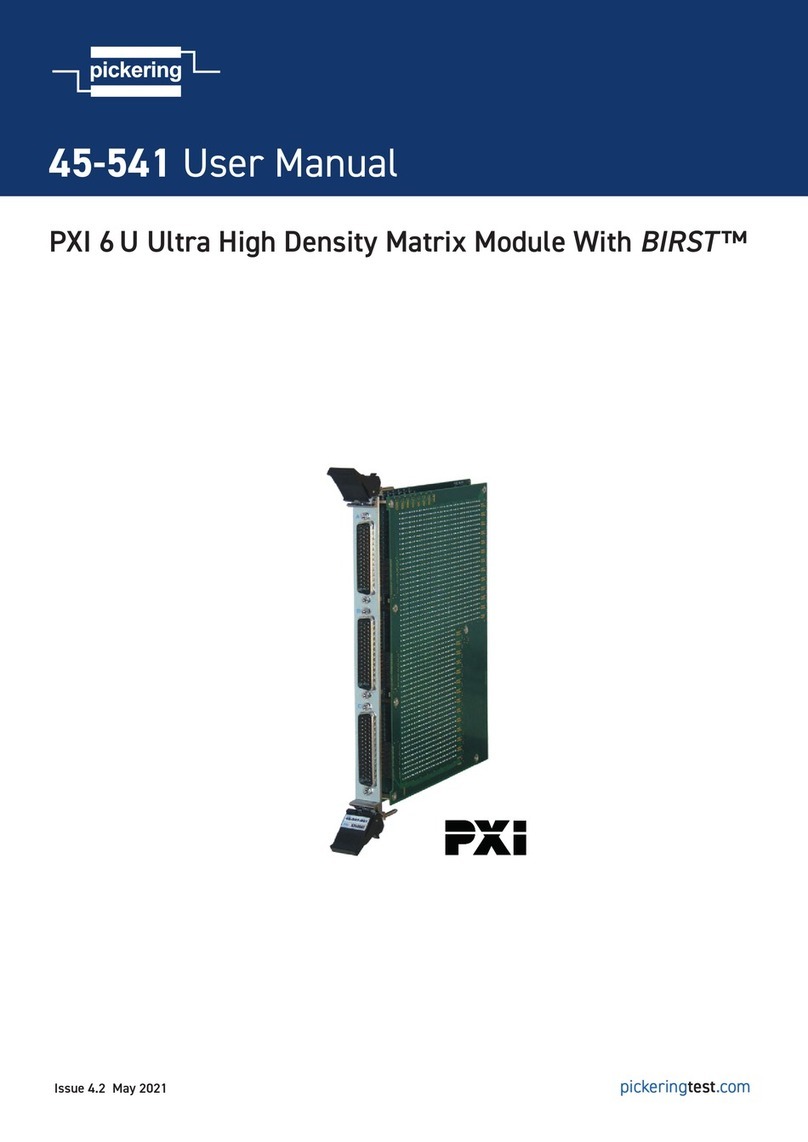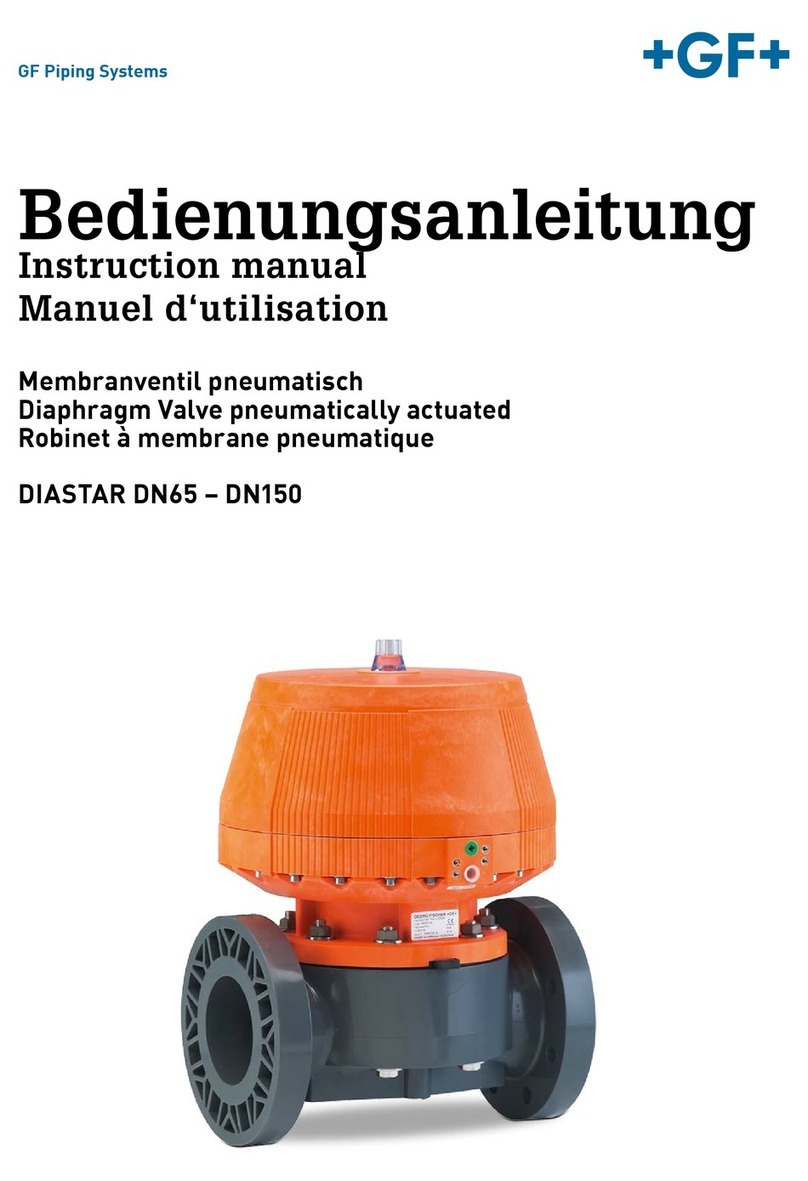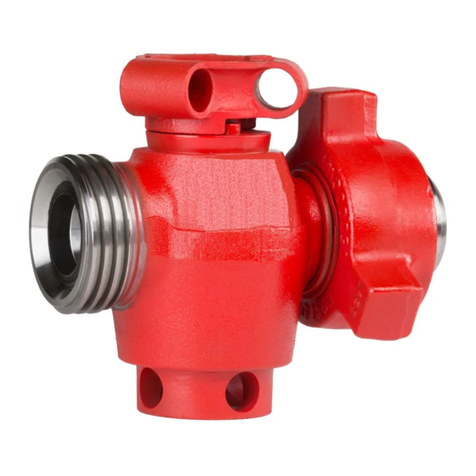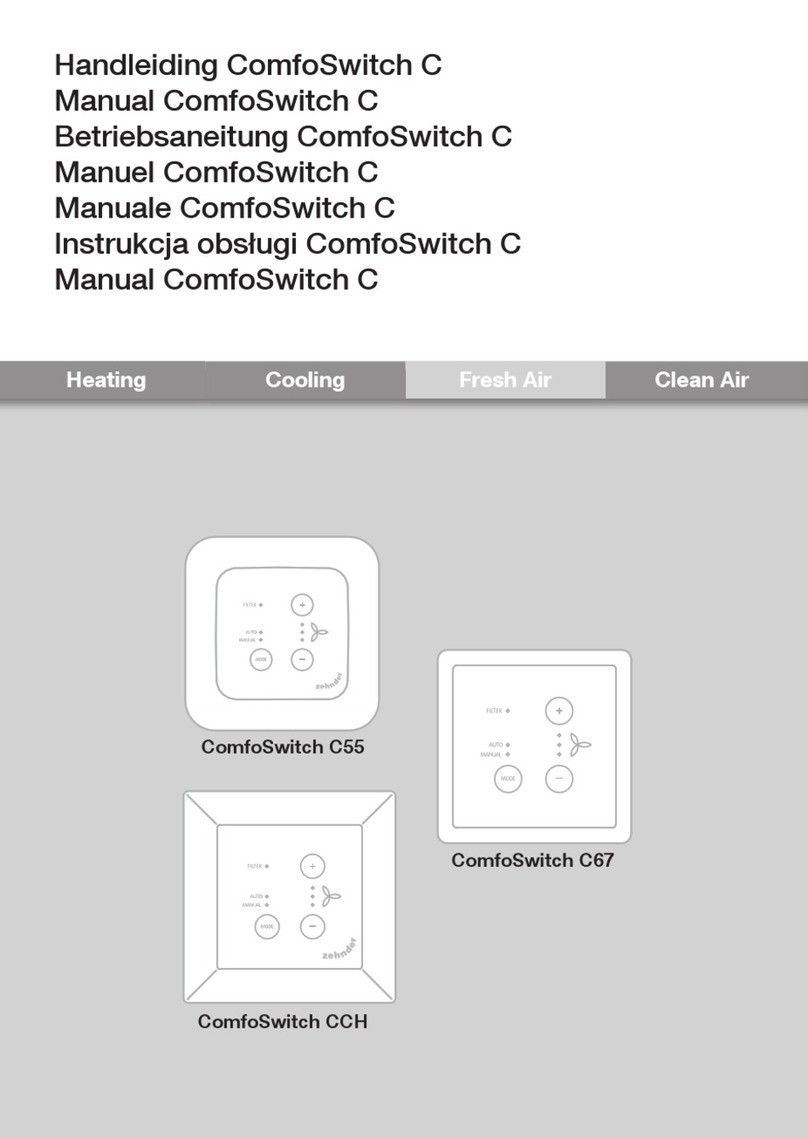StepperOnline CL57T User manual

User Manual
CL57T(V4.0)
Closed Loop Stepper Drive
Revision 4.0
Record of Revisions
Revision
Date
Description of Release
1.00
Aug, 2019
Initial Release
4.00
Oct, 2020
Add S1 rotating switch, 5/24V selector switch, brake output.

CL57T(V4.0) Closed-Loop Stepper Drive
Table of Content
1. Features.............................................................................................................................................................................1
2. Specifications.................................................................................................................................................................... 1
2.1 Electrical Specifications.......................................................................................................................................... 1
2.2 Environment............................................................................................................................................................1
2.3 Mechanical Specifications...................................................................................................................................... 2
3. Connections and LED Indication....................................................................................................................................... 3
3.1 P1 – Control and Digital Output Connections........................................................................................................ 3
3.2 P2 - Encoder Signals Input Connector.................................................................................................................... 4
3.3 P3 - Motor Connector............................................................................................................................................. 4
3.4 P4 - Power Connector............................................................................................................................................. 4
3.5 LED Status Lights.....................................................................................................................................................4
3.6 Switches.................................................................................................................................................................. 4
4. Power Supply Selection.....................................................................................................................................................5
4.1 Power Supply Sharing............................................................................................................................................. 5
4.2 Selecting Supply Voltage.........................................................................................................................................5
5.Switch Configurations........................................................................................................................................................ 6
5.1 S1 - Rotating Switch Configurations....................................................................................................................... 6
5.2 S2 - DIP Switch Configurations................................................................................................................................6
5.2.1 Micro Step (SW1-SW4)................................................................................................................................ 6
5.2.2 Mode Setting (SW5 - SW8).......................................................................................................................... 7
5.3 S3 - Selector Switch Configurations........................................................................................................................7
6. Typical Connection............................................................................................................................................................8
6.1 Digital Input Connection.........................................................................................................................................8
6.2 Fault Output Connection........................................................................................................................................ 9
6.3 Brake Output Connection....................................................................................................................................... 9
7. Sequence Chart of Control Signals................................................................................................................................... 9
8. Fault Protections & Troubleshooting..............................................................................................................................10

CL57T(V4.0) Closed-Loop Stepper Drive
1
1. Features
Input voltage 18-50VDC (recommended 24-48VDC)
No loss of step, No tuning
500 KHz max pulse input frequency
16 microstep resolutions of 200-51,200 via DIP switches SW1 - SW4
3 output current settings of 2.8A, 5.6A and 7.0A via S1 rotating switch
Gain tuning via S1 rotating switch
Auto-tuning to match wide-range NEMA 17, 23 and 24 closed-loop stepper motors
Anti-Resonance for optimal torque, extra smooth motion, low motor heating and noise
Soft-start with no “jump” when powered on
Optically isolated inputs with 5V or 24V
Fault and brake outputs
Motor rotating direction setting by SW5
Closed loop or open loop control setting by SW6
Step&Direction or CW&CCW pulse type setting by SW7
Position command filter setting by SW8
Over-voltage, over-current protections, position following error, etc
2. Specifications
2.1 Electrical Specifications
Parameters
Min
Typical
Max
Unit
Peak Current
2.4 (RMS 2A), 5.6 (RMS 4A), 7.0 (RMS 5A)
A
Operating Voltage
18
24, 36, 48
50
VDC
Logic input signal current
7
10
16
mA
Pulse input frequency
0
-
500
kHz
Brake output signal current
-
-
100
mA
Alarm output voltage
-
-
24
VDC
Minimal pulse width
1.0
-
-
μS
Minimal direction setup
2.0
-
-
μS
Isolation resistance
500
MΩ
2.2 Environment
Cooling
Natural Cooling or Forced Cooling
Operating Environment
Environment
Avoid dust, oil fog and corrosive gases
Humidity
40%RH-90%RH
Operating Temperature
0°C -40°C (32°F - 102°F)
Vibration
10-50Hz / 0.15mm
Storage Temperature
-20°C -65°C (-4°F - 149°F)
Weight
Approx. 280 g (9.9 Oz)

CL57T(V4.0) Closed-Loop Stepper Drive
2
2.3 Mechanical Specifications
(unit: mm [1inch=25.4mm])
Figure 1: Mechanical specifications
2.4 Heat Dissipation
CL57T(V4.0) reliable working temperature should be no more than 40℃(109°F)
It is recommended to mount the drive vertically to maximize heat dissipation. Mount a cooling fan nearby if
necessary.
If multiple CL57T(V4.0) drives are installed, it is suggested to keep a minimal 30mm (12 inches) between two of
them.

CL57T(V4.0) Closed-Loop Stepper Drive
3
3. Connections and LED Indication
A CL57T(V4.0) closed loop stepper drive has 4 connection blocks from P1 to P4 (see figure 2).
Figure 2: CL57T(V4.0) connectors
3.1 P1 – Control and Digital Output Connections
The P1 connector in Figure 2 contains connections for control signals and 2 digital output.
See the following table for details.
PIN
I/O
Details
PUL+ (CW+)
I
Pulse and Direction Connection:
(1) Optically isolated, high level 3.5-5V or 24V, low voltage 0-0.5V
(2) Maximum 500 KHz input frequency
(3) The width of PUL signal is at least 1.0μs, duty cycle is recommended 50%
(4) Single pulse (step & direction) or double pulse (CW/CCW) is set by DIP Switch SW7
(5) DIR signal requires advance PUL signal minimum 2 μs in single pulse mode
(6) The factory setting of control signal voltage is 24V, must need to set S3 (figure 2) if it is
5V
PUL- (CW-)
I
DIR+ (CCW+)
I
DIR- (CCW-)
I
ENA+
I
Enable Signals: Optional.
(1) Effective high level is 3.5-24V; Effective low level is 0-0.5V connection
(2) ENA signal requires advance DIR signal minimum 200ms in single pulse mode, (default
no connection)
ENA-
I
ALM
O
Alarm : They takes a sinking or sourcing 100mA current at 5-24V. Max 30V
Brake : Max. 24/100mA, connect with brake coil, relay and diode.
Common connection of single-end output signals (common-cathode)
BRK
O
COMO
O

CL57T(V4.0) Closed-Loop Stepper Drive
4
Notes: (1) Shielding control signal wires is suggested; (2) To avoid/reduce interference, don’t tie control signal cables
and power wires together; (3) Brake output need to connect a relay and diode
3.2 P2 - Encoder Signals Input Connector
The P2 connector in Figure 2 is for encoder signals connection. Refer to the following table for details.
Drive Pin Name
Description
EB+
Encoder B+ input connection
EB-
Encoder B- input connection
EA+
Encoder A+ input connection
EA-
Encoder A- input connection
VCC
Encoder +5V voltage output connection
EGND
Power ground connection
3.3 P3 - Motor Connector
PIN
Details
A+
Connect to motor A+ wire
A-
Connect to motor A- wire
B+
Connect to motor B+ wire
B-
Connect to motor B- wire
3.4 P4 - Power Connector
Pin
Details
GND
Connect to power supply ground connection.
+VDC
Connect to power supply positive connection. Suggest 24-48VDC power supply voltage
!
Warning
Warning: Don’t plug/unplug P3 or P4 connector to avoid drive damage or injury while powered on.
3.5 LED Status Lights
There are two LED lights. The GREEN one is the power indicator which should be always on in normal circumstance.
The RED one is a alarm status indication light, which will be OFF while working normally but ON and flash some times
in a 3-second period in the case of enabled alarm protections.
3.6 Switches
The CL57T(V4.0) has one rotating switch, one 8-bit DIP switch and one 1-bit selector switch.

CL57T(V4.0) Closed-Loop Stepper Drive
5
Switch
Pic
Details
Rotating
switch S1
Drive Peak Current and Gain adjustment
DIP
switch S2
Microstep resolution
Rotation direction
Pulse Mode
Positional command filter
Closed / Open Loop Mode
Selector
switch S3
5V or 24V control signal voltage selector.
The factory setting is 24V, must need to set S3 to 5V if the control
signal voltage is 5V
4. Power Supply Selection
The CL57T(V4.0) can power medium and large size stepping motors (frame size from NEMA 17 to 24). To get good
driving performances, it is important to select supply voltage and output current properly. Generally speaking, supply
voltage determines the high speed performance of the motor, while output current determines the output torque of
the driven motor (particularly at lower speed). Higher supply voltage will allow higher motor speed to be achieved, at
the price of more noise and heating. If the motion speed requirement is low, it’s better to use lower supply voltage to
decrease noise, heating and improve reliability.
4.1 Power Supply Sharing
Multiple CL57T(V4.0) drives can share one power supply to reduce cost, if that power supply has enough power
capacity. To avoid cross interference, connect each stepper drive directly to the shared power supply separately. To
avoid cross interference, DO NOT daisy-chain connect the power supply input pins of the Drivers. Instead connect
them to power supply separately.
4.2 Selecting Supply Voltage
The CL57T(V4.0) is designed to operate within 18 - 50VDC voltage input. When selecting a power supply, besides
voltage from the power supply power line voltage fluctuation and back EMF voltage generated during motor
deceleration needs also to be taken into account. Please make sure leaving enough room for power line voltage
fluctuation and back-EMF voltage charge back, it’s recommended 24 - 48VDC.
Higher supply voltage can increase motor torque at higher speeds (>300 RPM), thus helpful for avoiding losing steps.
However, higher voltage may cause bigger motor vibration at lower speed, and it may also cause over-voltage
protection or even drive damage.

CL57T(V4.0) Closed-Loop Stepper Drive
6
5. Switch Configurations
5.1 S1 - Rotating Switch Configurations
This rotating switch is used to set the peak current of the drive and motion gain, from the motor phase current and
application requirements.
Peak
Current
RMS
Current
Code
Velocity
loop Ki
Position
loop Kp
Velocity
loop Kp
Remark
2.8A
2A
0 (factory)
0
25
25
1) Velocity loop Ki Indicates the stop time
and position accuracy , “0” indicates the
stop time is long, but the position error is
smaller.“16” means the stop time is short,
but the position error is slightly larger.
2) Position loop Kp and velocity loop Kp is a
pair of composite parameters that represent
rigidity. “25” and “25”composite parameters
indicate the rigidity is weak, “100” and
“5”composite parameters indicate the
rigidity is strong. Sometimes if the motor
will rotate after stopping, it can increase the
value of position loop Kp, but if the value is
too large, the motor will have noise.
3) Usually keep factory settings
1
0
50
15
2
16
25
25
3
16
50
15
5.6A
4A
4
0
25
25
5
0
50
15
6
0
100
5
7
16
25
25
8
16
50
15
9
16
100
5
7A
5A
A
0
25
25
B
0
50
15
C
0
100
5
D
16
25
25
E
16
50
15
F
16
100
5
5.2 S2 - DIP Switch Configurations
The 8-bit is located on the side (DIP switch S2 in Figure 2) and used to configure settings of micro step resolution,
output current, and motor standstill current as shown below
SW1
SW2
SW3
SW4
SW5
SW6
SW7
SW8
Figure 3: DIP switches
5.2.1 Micro Step (SW1-SW4)
Each CL57T(V4.0) has 16 microstep settings which can be configured through DIP switches SW1, SW2, SW3 and SW4.
See the following table for detail.
Control mode
Rotation direction
Microstep
Pulse mode
Pulse filter time

CL57T(V4.0) Closed-Loop Stepper Drive
7
Micro step
Pulses/Rev. (for 1.8°motor)
SW1
SW2
SW3
SW4
1
200
on
on
on
on
4
800
off
on
on
on
8
1600
on
off
on
on
16
3200
off
off
on
on
32
6400
on
on
off
on
64
12800
off
on
off
on
128
25600
on
off
off
on
256
51200
off
off
off
on
5
1000
on
on
on
off
10
2000
off
on
on
off
20
4000
on
off
on
off
25
5000
off
off
on
off
40
8000
on
on
off
off
50
10000
off
on
off
off
100
20000
on
off
off
off
200
40000
off
off
off
off
5.2.2 Mode Setting (SW5 - SW8)
Function
ON
OFF
SW5
Rotation Direction
CW (clockwise)
CCW (counterclockwise)
SW6
Control Mode
Open loop control
Closed loop control
SW7
Pulse Mode
CW/CCW (double pulse)
PUL/DIR (single pulse)
SW8
Pulse Filter Time
Yes (10ms)
No (1.5ms)
CL57T(V4.0) has an advanced feature called Pulse Filter Time to make the input pulse from pulse generator (controller,
PLC, etc.) S-curve acceleration, to improve motion smoothness and high-speed start frequency in many
circumstances.
The Filter Time value must be set to the same for each CL57T(V4.0) in multi-axis applications
5.3 S3 - Selector Switch Configurations
The 1-bit selector is located on the top (S3 in figure 2), used to configure the voltage of control signals. For the safety
of optically coupled, the factory setting is 24V, which no need to connect 2K resistors, making it easier to use. When
the voltage of the control signal is 5V, the S3 must be set to 5V, otherwise, the motor won't work.

CL57T(V4.0) Closed-Loop Stepper Drive
8
6. Typical Connection
A complete closed loop stepper system should include a stepper motor with encoder, CL57T(V4.0) drive, power
supply and controller (pulse generator). A typical connection is as below.
Figure 4: Typical connection
Notes: (1) Pulse and direction inputs level 5V or 24V selected by selector switch S3. When it is 24 V, the S3 selection
of 5V will damage the input photo-coupling.
(3) Enable (ENA) signal is 5V~24V compatible.
6.1 Digital Input Connection
The CL57T(V4.0) can accept can accept differential or single-ended control signals (pulse, direction, and enable) in
open-collector or PNP connection through the P1 connector (figure 2). It is recommend to add an EMI line filter
between the power supply and the drive to increase noise immunity for the drive in interference environments.
Figure 5: Connections to open-collector signal Figure 6: Connections to PNP signal
(common-anode) (common-cathode)
Notes:
(1) ENA signal is no-connected as default;
(2) Control signal amplitude is 24 V as default. If it is 12 V, please set the S3 (Figure 2) selector switch to 5 V first, then
connect 1KΩ resistor; If it is 5V, please set the S3 to 5V.
Drive
Controller
VCC
PUL-
PUL+
ENA-
PUL
DIR
ENABLE
DIR-
DIR+
ENA+
Drive
Controller
VCC PUL-
PUL+
ENA-
PUL
DIR
ENABLE
DIR-
DIR+
ENA+

CL57T(V4.0) Closed-Loop Stepper Drive
9
6.2 Fault Output Connection
When over voltage or over current protection happens, CL57T(V4.0) red status LED light will blink and the impedance
state between ALM and COM- will change (from low to high or high to low depending on configuration) and can thus
be detected. Fault output connection is optional, and it can be connected either in sinking or sourcing.
Figure 7 Sinking output Figure 8 Sourcing output
6.3 Brake Output Connection
This drive has a special brake output, it needs to drive the motor brake with a relay. The connection is below:
Figure 9 Brake output connection
7. Sequence Chart of Control Signals
In order to avoid some fault operations and deviations, PUL, DIR and ENA should abide by some rules, shown as
following diagram:

CL57T(V4.0) Closed-Loop Stepper Drive
10
Figure 10: Sequence chart of control signals
Remark:
a) t1: ENA must be ahead of DIR by at least 200ms. Usually, ENA+ and ENA- are NC (not connected). See
“Connector P1 Configurations” for more information.
b) t2: DIR must be ahead of PUL effective edge by 2us to ensure correct direction;
c) t3: Pulse width not less than 1us;
d) t4: Low level width not less than 1us;
e) Duty cycle of PUL signal is recommended 50%.
8. Fault Protections & Troubleshooting
To improve reliability, the drive incorporates some built-in protection features.
Blink
time(s)
Sequence wave of red LED
Description
Trouble shooting
1
0.2S
5S
Over-current
Turn off the power immediately.
a) Check wiring is short-circuited or not;
b) Check motor is short-circuited or not.
2
0.2S
0.3S
5S
Over-voltage
Turn off the power immediately.
a) Check if the power voltage is higher
than 90VDC
3
Chip error
Restart the power supply, if the drive is
still alarm, please contact after-sale
4
Fail to lock motor
shaft
a) The drive is not connected to a
motor;
b) If alarm is occurred when connect a
motor, please check the motor power
cable.
5
EEPROM error
Restart the power supply, if the drive is
still alarm, please contact after-sale

CL57T(V4.0) Closed-Loop Stepper Drive
11
6
Fail to auto tuning
Restart the power supply, if the drive is
still alarm, please contact after-sale
7
0.2S
0.3S
5S
Position following
error
a) Set SW6 to “ON” to make motor run
in open loop mode, If alarm disappears,
it means encoder wiring error;
b) Motor torque is not enough or motor
speed is too high;
Always
-
PCB board is
burned out
Restart the power supply, if the drive is
still alarm, please contact after-sale
When above protections are active, the motor shaft will be free or the red LED blinks. Reset the drive by repowering it
to make it function properly after removing above problems.
In the event that your drive doesn’t operate properly, the first step is to identify whether the problem is electrical or
mechanical in nature. The next step is to isolate the system component that is causing the problem. As part of this
process you may have to disconnect the individual components that make up your system and verify that they
operate independently. It is important to document each step in the troubleshooting process. You may need this
documentation to refer back to at a later date, and these details will greatly assist our Technical Support staff in
determining the problem should you need assistance.
Many of the problems that affect motion control systems can be traced to electrical noise, controller software errors,
or mistake in wiring.
Symptoms
Possible Problems
Solutions
Motor is not rotating
No power
Connect power supply correctly
Microstep resolution setting is wrong
Setting appropriate microstep
Fault condition exists
Check wiring and restart power
The drive is disabled
Drive restore factory setting, and keep
ENA+, ENA- input signals unconnected.
Wrong motor rotation direction
The Direction signal level is reverse
Toggling the SW5 DIP switch
Erratic motor motion
Control signal is too weak
Ensure the current of control signal is
within 7-16mA
Control signal is interfered
Don’t tie the control signal cable with
power cable together
Wrong motor connection
Refer to user manual of drive and motor
datasheet
Something wrong with motor coil
Check the motor is normal

CL57T(V4.0) Closed-Loop Stepper Drive
12
Motor stalls during acceleration
Current setting is too small
Choose another power supply with lager
power or increase the output current of
drive
Motor is undersized for the application
Choose another motor with higher torque
Acceleration is set too high
Reduce the acceleration
Power supply voltage too low
Choose another power supply with large
voltage output
Excessive motor & drive heating
Inadequate heat sinking / cooling
Refer to chapter 2.4
Motor peak current setting is too high
Reduce the current value refer to motor
datasheet
Motor vibration when power on
Speed loop Kp is too high
Reduce the speed loop Kp value
Other manuals for CL57T
1
Table of contents
Other StepperOnline Control Unit manuals
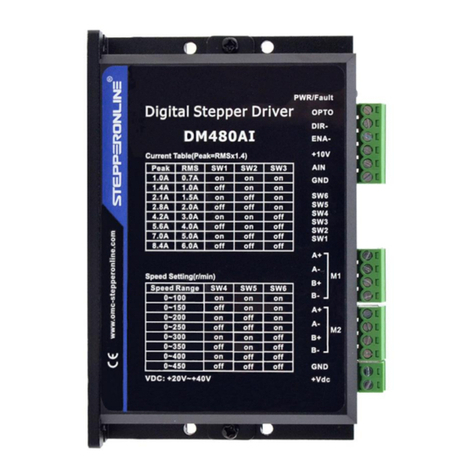
StepperOnline
StepperOnline DM480AI User manual
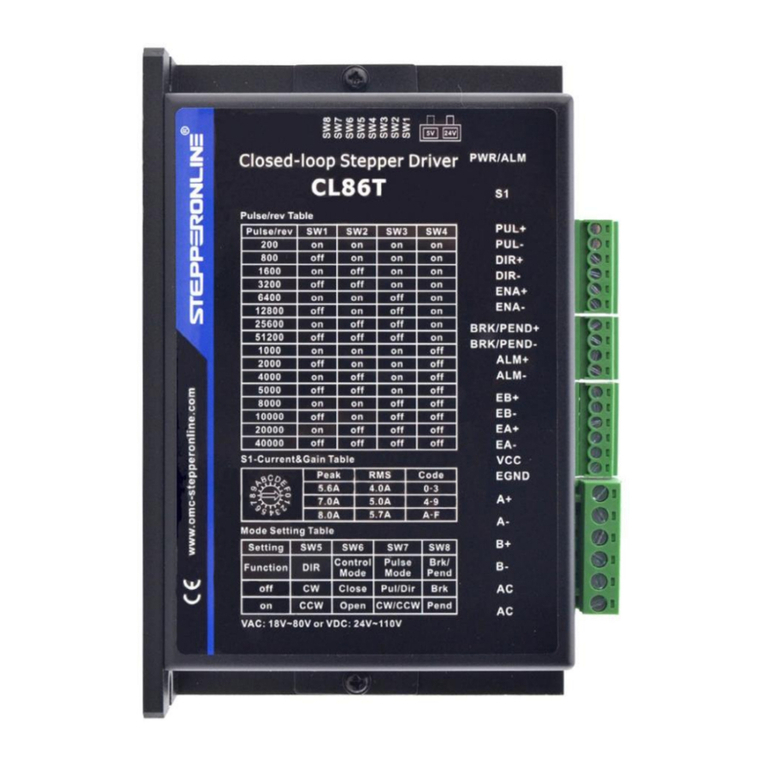
StepperOnline
StepperOnline CL86T User manual
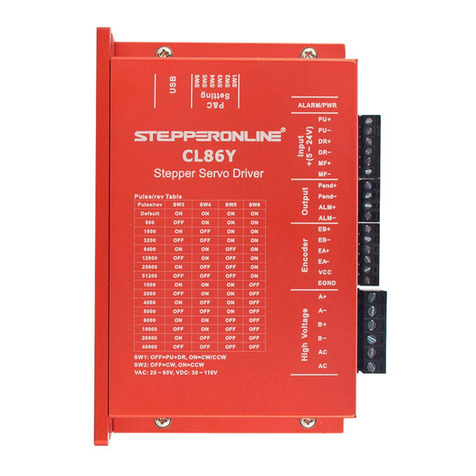
StepperOnline
StepperOnline Y Series Instruction Manual
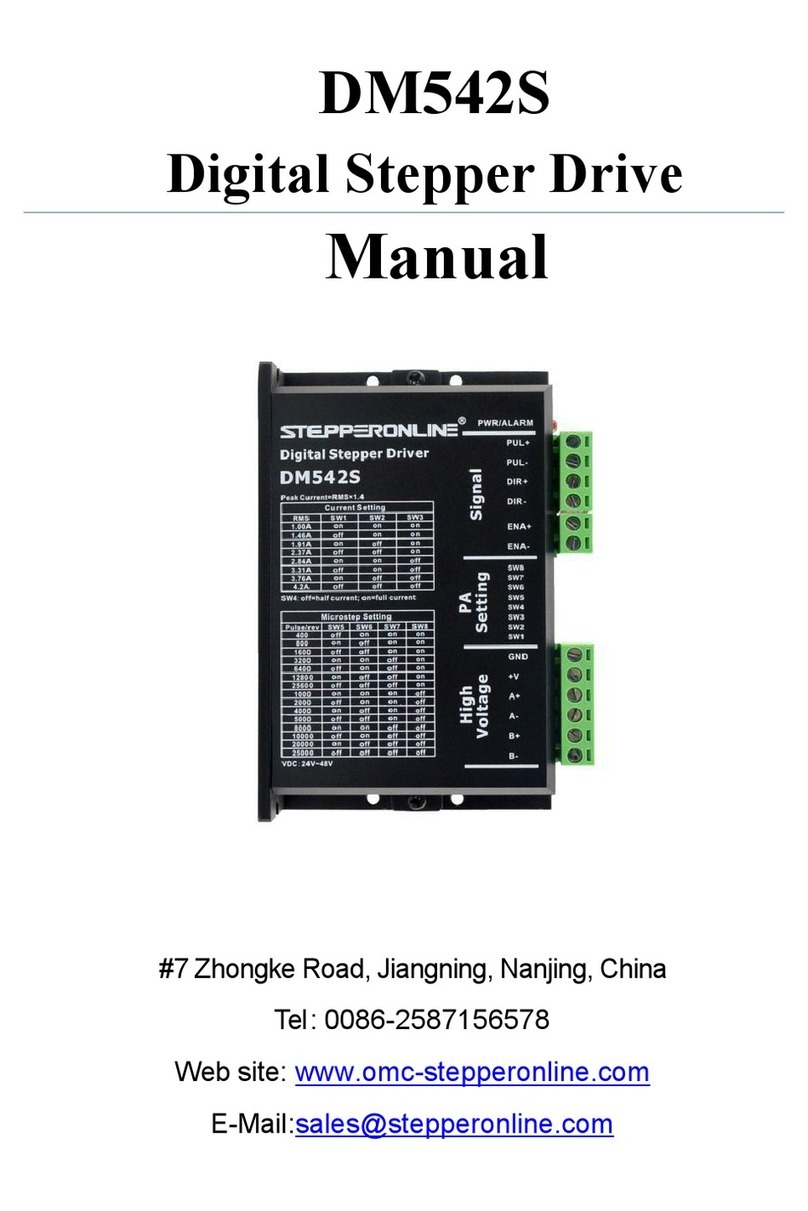
StepperOnline
StepperOnline DM542S User manual
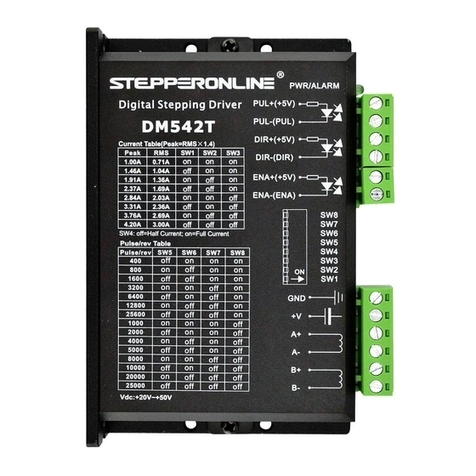
StepperOnline
StepperOnline DM542T User manual

StepperOnline
StepperOnline MA860H User manual

StepperOnline
StepperOnline DM542T User manual

StepperOnline
StepperOnline CL86T User manual
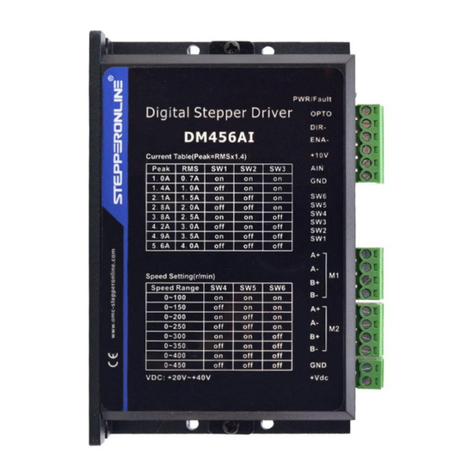
StepperOnline
StepperOnline DM456AI User manual
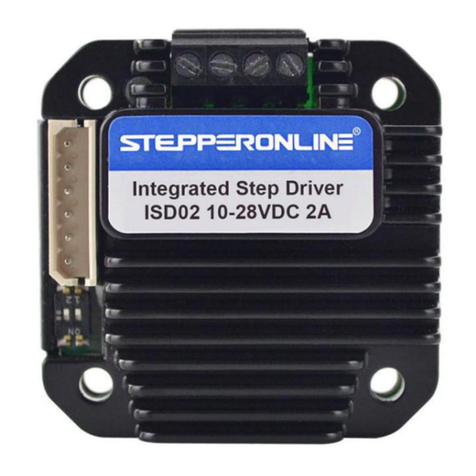
StepperOnline
StepperOnline ISD02 User manual

